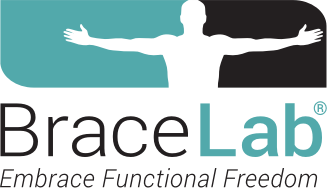Focused Muscle Stabilization for Wrist Instability

October 2023 No. 81
Focused Muscle Stabilization for Wrist Instability
by Karol S. Young OTD, OTR/L, CHT
Normal wrist function depends upon both static ligament support and dynamic muscle stabilization. To improve stability in a wrist lacking ligament support, rehabilitation concentrates on activating the key stabilizing muscles. The muscle activation exercises suggested below for common wrist instabilities is based on the work of Esplugas, et al.
Contraction of the extrinsic wrist muscles either produces a pronation or supination force on the distal carpal row. Supination tightens one group of carpal ligaments while the other group becomes slack, and the opposite occurs with pronation. Thus, wrist muscles can be classified either as pronators or supinators:


Scapholunate Instability
The goal of muscle activation with scapholunate instability is to support the scapholunate (SL) joint through simultaneous contraction of the ECRL, ECRB, and APL muscles (carpal supinators) and then contraction of the FCR muscle (carpal pronator). This is called dart thrower’s motion. While both the ECU and the FCR are distal row pronators, Esplugas, et al. found that only the ECU transmits a pronation force to the scaphoid, while the FCR slightly supinates the scaphoid, thus keeping the SL joint reduced.
It is important to initiate SL isometric exercises with the forearm in pronation to minimize ECU muscle tension. Because the ECU pronates the scaphoid, its contraction places unwanted tension on the scapholunate ligament while it heals.
Isometric exercises provide muscle re-education without producing active motion through the carpal joints. As the SL ligament heals, the patient progresses to isotonic exercises, slowly loading the wrist through the range of motion, while also adding wrist proprioceptive training. We use the newly available WriStable® (Figure 1) during proprioceptive training to enhance neuromuscular control, especially when the wrist is loaded. See Figure 2: Wrist Instability Exercise Chart.


Figure 1: WriStable® Wrist Brace is worn during proprioceptive exercises for SL instability.
Palmar Midcarpal Instability
The goal with palmar midcarpal instability is to maintain wrist stability during radial and ulnar wrist deviation by activating alternating ECU (carpal pronator) and FCR (carpal supinator) muscle contractions. Forearm supination maximizes the stabilizing effect of the ECU and FCR on the carpus during these exercises.
Begin with isometric ECU exercises with the forearm in supination. As the ligament heals progress to alternating isometric wrist radial flexion and isometric ulnar wrist extension, (reverse dart thrower’s motion.) Continue the exercises while progressing to a position of the forearm in neutral and then in pronation. See Figure 2: Wrist Instability Exercise Chart
Focused Rehabilitation
Rehabilitation of an unstable wrist requires knowledge of complex wrist anatomy and kinesiology. A stable wrist depends upon accurate bony alignment, intact ligaments, a proper functioning sensorimotor system, and balanced muscle support. When one of these systems fails, our rehabilitation must use the anatomy advantageously to activate and strengthen the stabilizing muscles that can best substitute for weakened/injured ligaments.
Interested in learning more? I recommend this succint lecture by Dr. Marc Garcia-Elias.






Figure 2: Wrist Instability Exercise Chart (Click to download PDF)
NOTE: Therapists must determine the appropriate exercise(s) and exercise sequence for each patient: photos above are examples only.
Download Clinical Pearl No. 81, Focused Muscle Stabilization for Wrist Instability, October 2023
© BraceLab; 2023 all rights reserved
Disclaimer: BraceLab Clinical Pearls are intended to be an informal sharing of practical clinical ideas; not formal evidence-based conclusions of fact.
